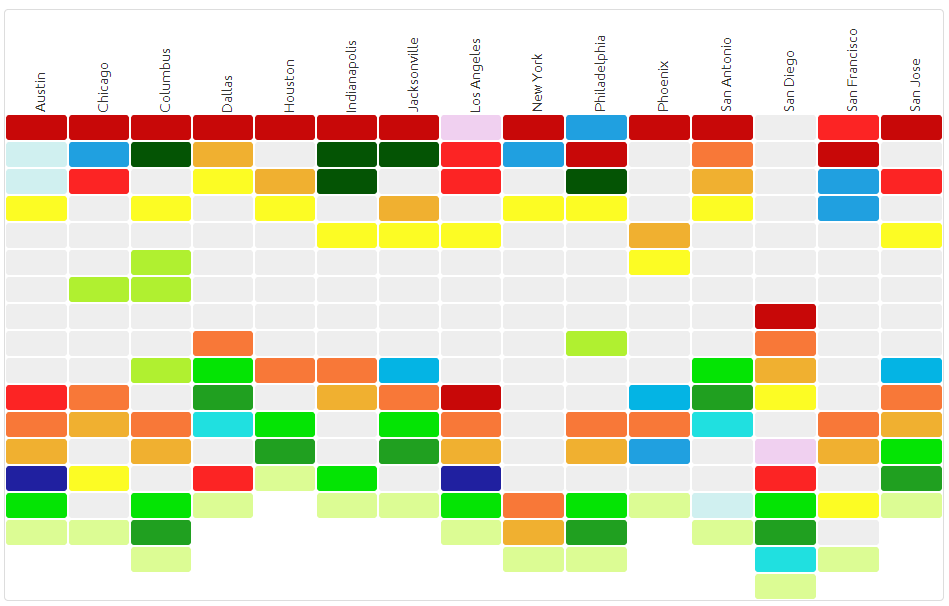Have you ever asked yourselves how SEO professionals and agencies run their Local SEO campaigns? Do you think they are doing some kind of magic for reaching Top Positions in Google and Bing?

Here is the list with the most important steps that will guide you through optimization process:
Step 1 – Keyword Prospecting
When starting their online marketing campaign, local business management has to focus on their most relevant products and services. The major point of every SEO campaign is achieving high visibility within search rankings for specific, profitable phrases known as keywords.
You can start with a predefined keywords list or you can create your own list.
Here are some great Keyword Suggestion Tools and Tips that will help you:
Google Analytics – provides the list with the keywords users are searching before reaching your site – you can discover high conversion long tail keywords with a low competition level. For this your site should be updated from time to time with high quality content. This keyword finder can also provide results for mobile devices which will play a bigger role in future.
Google Webmasters Tools – perhaps the most popular checker on our list, it provides the number of impressions, clicks and CTR (Click-through rate) click for each different referring keyword – Try to improve the CTR for the keywords with the biggest number of impressions as your website already ranks in a good position. It is also the best way to sell your product or service.
After analyzing the first two options you should already have a short list with keyword ideas. You can use the next software for finding new ones.
Google AdWords – Keyword Tool – provides keyword suggestions starting from a list of keywords. You will be able to see the Global Competition Level, the number of Local and Global Monthly Searches and if you’ll be logged in your google account it will provide also the approximate CPC ( cost per click ) which is an important decision factor for adding the keyword to your list.
Now, the keyword list is beginning to increase. It’s time to apply some filters in order to keep only the important keywords and expressions. When it comes to local search engine optimization, all you’ll be interested in is what your Local USERS search for and the BEST TOOL to use for filtering your keyword list is:
Google Trends – this tool has an incredible advantage, as it provides statistics on a local basis. You are able to compare & track the interest for each keyword on any city in the world. It also offers some other resources
Through the following example we aim to show you that there are about 4 times more users located in Miami, FL searching for “pizza delivery” than there are in Miami, FL searching for “pizza delivery Miami”. This example also reveals that the trend is positive only for the search which is NOT including the location name. (blue color )

Analyze each of your keywords with Google Trends and choose only the ones with a positive trend on the targeted location.
Step 2 – Analyze Metrics
Generating a Local Ranking Report – In order to find out the website ranks at the beginning of a SEO campaign, using KeySR you can run a depersonalized local ranking report as a user located in the targeted location/s.
This will help you to:
- analyze the website’s current ranking status on each different location
- analyze the Local SEO Competition Level on each location by using the Organic HeatMap Reports. When you spot keywords with similar SERP rankings in all locations ( same HeatMaps colors on different locations )
- then you’ve hit the JackPot – as probably none of the competitors has run a Local SEO campaign for that certain keyword on the selected locations.

- identify Local SEO Competitors and analyze their Local SEO Strategy in order to build a better one ( InSite SEO, BackLinking Structure, Social Media Activity )
Monitoring the Local Rankings is an important step as it will offer you a clear view of your achievements in each targeted location.
At this point you already have a filtered keyword list and you also know the other competitors SEO strategy. Now it is time to create your own strategy. And the first step you can do, is to implement what you’ve seen top ranking sites are doing and afterwards add more Local SEO factors.
Step 3 – Local In-Site SEO
Since the web is already filled with huge lists of Local SEO InSite factors, I will mention only the most important ones:
- Place NAP ( Name Address Phone Number ) in a visible area of your website, zipcode shall also be visible
- Using Geo Tags / Microformat / Structured data – for the search engines to understand exactly what is your targeted location
- Add Google Maps on the Contact page

- create a Local.KML file and add it to sitemap.xml
- use targeted location name in the sites URL, Title and MetaDescription
- optimize images with local terms in Alt and Titles
- building internal links ( do not exaggerate ) – use geo terms in the anchor text. Build an internal linking structure, in order to distribute the Google Juice to the most important pages and subpages.
- add good quality content to your site. Use targeted keywords next to targeted locations names. Inviting guest authors is a good strategy to do this, as long as you carefully verify the content quality.
Do not copy content, do not spin, do not create too many internal backlinks, do not use iframes to get text from other websites etc… Most of the Generic SEO “Do Not’s” also apply to Local SEO. So, if you want to find out more information on this topic, all you need to do is google it.
As people focus on digital strategies and SEO, they forget to put clients in the center of attention. If something helps optimization it doesn’t necessarily have positive impact on users. Even if it’s a small change, your team should consider how it will affect company’s reputation.
If you followed all the above described steps, your website should already be in a nice shape. The next thing to do is to increase the Local SEO Authority Level.
Step 4- Local Off-Site SEO
For Local SEO – Social Media is a very important factor as it can bring direct and indirect benefits.
Direct – Google is able to see the Social Media behavior 1s, Likes, Shares, Tweets, Pins, Followers, Subscribers etc.
Indirect – some of the SM users will consider your content useful and will mention it by sending backlinks ( do follow or no follow – these days it is no longer an important distinction).
Local businesses depend heavily on social media. Customers usually learn more about your company through Facebook and Twitter than by reading some post on your blog. By visiting your info page on Facebook, customer can get more details about working hours, address, events, special offers and so on.
What you can do is:
- create profiles on as many Social Networks as you manage, share content ( yours or others if it is useful). Here’s a list of social networks you can start with: Facebook, Twitter, Google , Pinterest, LinkedIn, InBound.org, Reddit, Scoop.it etc
- remember to use Local terms, if possible
- be active on local communities and forums – active means No Spamming – but being helpful. You can easily be listed as a spammer and it will affect your ability to submit future posts
- add and verify your location/s to Google Places
- be as accurate as possible
- complete an Advanced Local SEO Link Prospecting Process
- add your website to local directories by using each time detailed NAP – this will bring you citations which for Local SEO almost the same important as backlinks
Be careful when adding your information to multiple listings though; while using local citation is an easy to rank your site in local search, not every listing will work well for you. Focus on those with higher authority such as Yelp or Yellow Pages.
- ask users for reviews on Google’s local and other specialized review sites
- create content that backlinks your site and use guest blogging to get backlinks from sites/blogs/forums which rank on top positions on the targeted area ( use Local Rankings to identify those sites )
Monitor! Monitor! Monitor!
Local rankings positions, keyword trends, website traffic, backlinks, competitors local rankings, stay connected to high quality local SEO communities and improve your Local SEO strategy according to the newest things you discover.
Be consistent, set realistic goals and you will do wonders for your local business.





